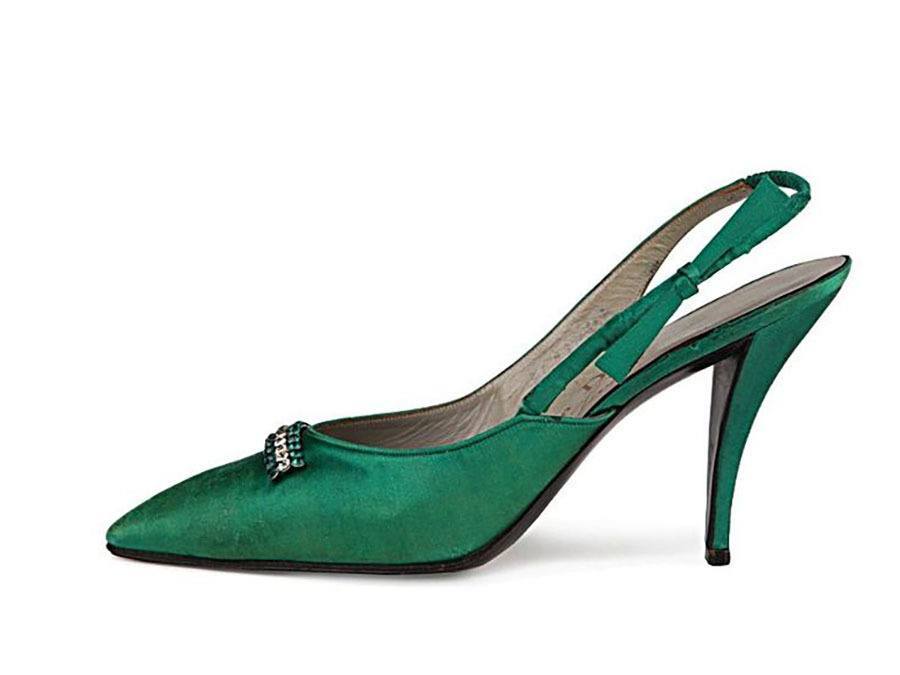High Heels History: Heading Toward Modernity

A 1950s slingback heel. Image Source: Pinterest
By the 18th century, the heel’s popularity had begun to decline. This was a turbulent time, rife with political revolutions, and the shoe’s potential to suggest class division was soon regarded as a bad thing. As historian Jennifer Wright noted, “The French revolution came. Democracy became fashionable and it started to seem unfashionable for anyone to tower over anyone else due to their social station.”
As the Victorian and Edwardian eras came, men began to regard the shoes as “impractical,” a trait that was — at a time when women were commonly and intensely regarded as physically and emotionally weak, frail and often hysterical — associated with women. Heels became gendered, and men abandoned them for more “practical” footwear.
Heeled footwear for women continued to evolve, though, with the first high heel manufacturing company opening in New York in 1888. Over the next several decades, particularly through wartime, “impracticality” led not to the heel’s abandonment, but its use by women of wealth, with heels once more an acceptable symbol of class and status. “One of the best ways that status can be conveyed is through impracticality,” Semmelhack said.
Heels thus influenced 20th century cultural ideals about the female form: the aesthetic effect of stiletto heels on a woman’s legs became synonymous with pornography, and after WWII, the pinup look made its way into street style, with high heeled shoes becoming a common look for women across most socioeconomic backgrounds, whether at home or in the workplace.
For old Hollywood starlets and pinups, the stiletto heel (named for the stiletto knife) became the totem of femininity. Brought into fashion in 1953, the shoe was first designed by Roger Vivier, whose heel he called “the needle.” (Fun aside: Legend has it that Marilyn Monroe shaved a quarter inch off one of her stilettos so that she’d walk with a more pronounced wiggle of her hips.)
Marilyn Monroe in Niagara. Image Source: GIPHY
As the heel became an essential part of a woman’s daily wardrobe, smaller, more manageable heels and pumps became commonplace. The 1960s saw the advent of the “kitten heel,” which could be worn even for tasks at home, like cooking and laundry.
The 1970s brought about the stiletto’s chunkier counterpart, the platform shoe, fashion’s response to the growing popularity of disco, which demanded that a woman be able to dance for long periods of time.
The 1980s and 1990s saw a resurgence of the stiletto as a feminist statement of power (paired often with sky-high hair and shoulder-padded power suits). Christian Louboutin became famous for his red-bottomed heels during this time and high heels became a fashion industry unto themselves, a trend that carries through to the present day — but only for women.
However, knowing that heels have a rich history with women and men, one does have to wonder if they will ever become fashionable for both genders again. Semmelheck doesn’t see why not. “If it becomes a signifier of actual power,” Semmelheck says, “then men will be as willing to wear it as women.”
Next, check out the history of birth control, or the surprising history of the vibrator.






